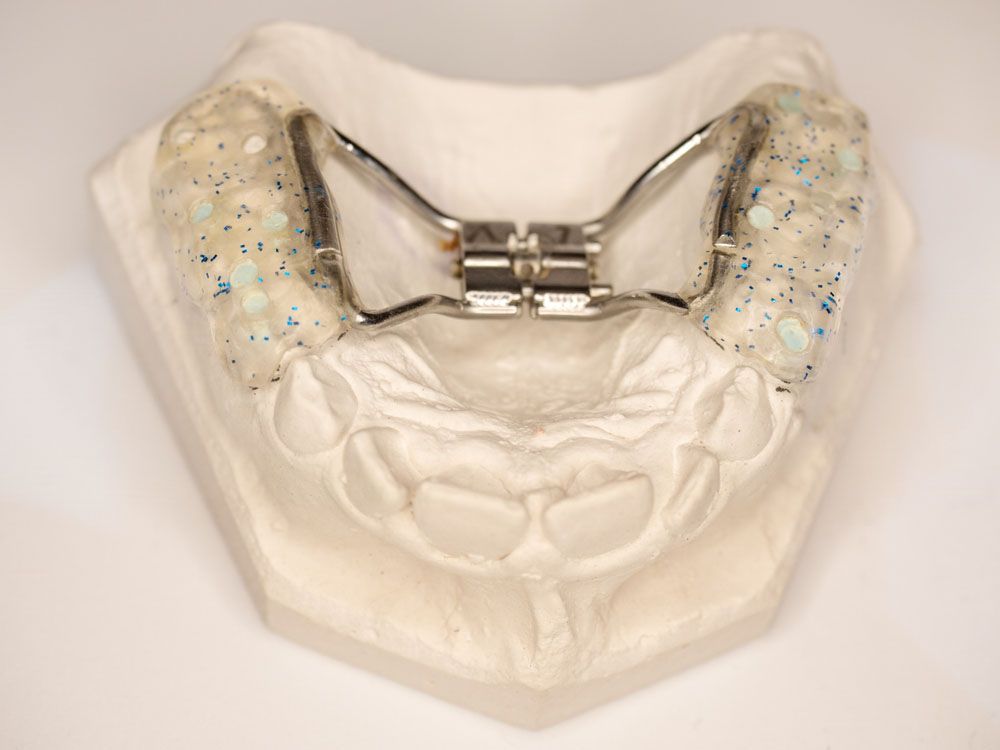This article is reviewed, corrected, and approved by: Dr. Joshua Collins M.D. | MRCP। FRCP
Everyone wants a nice facial structure with a flawless set of pearly white teeth. But some people are born with teeth that are positioned unevenly and not properly aligned. Injuries or genetic inheritance can also contribute to this misalignment.
Luckily, there are several advanced orthodontic treatments available to help you achieve your goals. One of the most impressive tools at the disposal of orthodontists everywhere is the palate expander.
What Is a Palate Expander?
An orthodontic expander or palatal expander is commonly known as a palate expander. It is a dental appliance designed to address a narrow upper jaw. This device uses expander braces that are positioned on the roof of the mouth and gradually create more space between both sides of the jawbone.
A palate expander can assist in easing several kinds of dental difficulties by extending the upper jaw. Such as crowding, crossbite, and breathing difficulties.
Orthodontic expanders are often commonly used in children, yet adolescents and adults can also benefit from them. This type of treatment is usually suggested for young people because their jaws are still growing and can be modified more easily.
How Expanders Function/Work?
These are custom-made for each individual; a palate expander fits over the upper back teeth. The device is structured and connected with two halves interlinked through a central screw.
By using a special key to turn the screw a little bit every day, tension is applied, which gradually moves the palatal bones apart. To ensure the stability of the gap after achieving the desired expansion level, it is recommended to leave the appliance in place for a few months. Any discomfort experienced initially is temporary and can be relieved with over-the-counter pain medications.
Types of Palate Expanders

There are several types of palate expanders tailored to specific needs:
- Removable Palate Expander: Resembling a retainer, it's made of chrome and is suitable for minor jaw widening.
- Rapid Palate Expander: A device is installed in the upper part of your mouth and connected to your upper teeth. It features a central screw that can be adjusted daily, gradually expanding your palatal bones over a period of three to six months.
- Surgically Assisted Rapid Palate-Expander (SARPE): In cases where the severity is moderate to severe, an oral surgeon will insert SARPE expander into the mid-palatal suture.
- Implant-Supported Expander: Utilizing mini dental implants, this option applies direct pressure to the upper jaw for effective expansion.
Who Might Benefit from a Palate Expander?
Your dentist or orthodontist may suggest a palate expander if you have:
- Crowded, overlapping, or crooked teeth.
- Impacted teeth.
- Chewing difficulties.
- Dental misalignment problems (open bite, underbite, overbite, crossbite).
- The purpose of a palate or teeth expander is to increase the width of your jaw, creating more dental space and enhancing the arrangement of your upper and lower teeth.
Additionally, palate expansion can aid both children and adults with obstructive sleep apnea. Sleep apnea is quite dangerous and it can even kill you. To know all about its dangers here: "Revealing The Fact - Can Sleep Apnea Kill You?"
Palate Expander Before and After
Before the Palate Expander
Imagine a person, whether a child or an adult, who has dental misalignment issues such as crossbite, crowding, or impacted teeth. These conditions can cause discomfort, difficulty in chewing and speaking, and even low self-esteem. Without the help of a palate expander, these challenges may seem overwhelming, and the future of their smile may be uncertain.
After the Palate Expander
After a few months, you'll notice a significant transformation in your smile after using a palate expander. The transformation from before to after is truly remarkable. The narrow upper jaw that caused misalignment will be replaced by a more harmonious and properly aligned smile.
The palate expander creates additional space, which helps prevent tooth extractions in the future, promotes the eruption of blocked teeth, and sets the perfect stage for future orthodontic treatments.
Benefits and Risks of Palate Expander
The benefits of palate expanders include addressing dental issues and reducing the likelihood of future oral surgeries. Risks include potential discomfort and minor side effects, like anterior teeth spacing, which can be corrected with orthodontics.
Benefits of Palate Expander
- Improved dental alignment
- Increased space for teeth (expander of teeth)
- Enhanced bite coordination
- Correction of crossbite, open bite, overbite, or underbite
- Potential prevention of future dental issues
Risks of Palate Expander
- Discomfort and soreness
- Difficulty speaking and eating initially
- Potential impact on oral hygiene
- Allergic reactions to materials
- Risk of damage to the expander
- Potential for relapse if not followed by a retention phase
The scenario that we can experience from the palate expander before and after is phenomenal. This can be evaluated by seeing the benefits of palate expanders.
How Orthodontic Expanders Transform Your Jaw and Teeth?
Palate expanders are a gentle and effective way to widen a child's upper jaw and create more space in their mouth. Early orthodontic intervention can help treat or prevent "bad bites" in children. This is done by taking advantage of their natural growth process. Orthodontic expanders play a significant role in achieving this goal.
Although some may have concerns about the process, it is generally simple and well-tolerated. The upper jaw consists of two halves that fuse together after puberty, but before this happens, the halves can be gradually separated and stabilized over several months.
Palate expanders are typically recommended in three scenarios:
- Crossbite: This happens when the back teeth of the upper jaw bite into those of the lower jaw, resulting in a narrow upper jaw.
- Crowding: Prevents the need for future tooth extractions by creating additional space for incoming permanent teeth.
- Impacted Teeth: Facilitates the eruption of blocked teeth, particularly the canine teeth situated beneath the eyes.
Expectations From A Palate Expander Procedure
Minor soreness or pressure after turning the key is common, though activating an expander is generally less discomforting than braces adjustments. Speech and eating adjustments occur as the tongue adapts to the device.
Temporary gaps between front teeth indicate successful expansion. After completion, permanent teeth are beautifully aligned with appropriate spacing.
Appropriate Age for Palate Expansion in Children
While individuals of any age can use an expander of teeth, children's jawbones are still in the developmental stage. Orthodontists often recommend starting palate expansion around 7 or 8 years old, capitalizing on their ongoing bone development.
This early intervention can reduce the need for more invasive procedures later in life, typically taking two to three months to achieve the desired outcome. For teenagers and adults with fully developed bones, achieving the desired palate expansion might take up to a year due to their stronger bone structure.
Final Thoughts
Finally. I am quite sure that you know all about what palate expander before and after entails. The use of a palate expander in modern orthodontics has shown remarkable results in transforming of smile, teeth, and jaw. By using a natural growth process and carefully expanding the upper jaw, orthodontists can address issues such as crossbites and prevent the need for tooth extractions.
These small changes can significantly boost overall confidence. If you or your child is experiencing dental misalignment, it may be worth considering the potential benefits of a palate expander to achieve a brighter, more confident smile.
Frequently Asked Questions (FAQs)
Q: How to turn a palate expander?
Ans: To adjust a palate expander, use the key provided to turn it gently as directed. Notice any discomfort or changes, and follow your orthodontist's instructions for changing your schedule. Contact an orthodontist if you have severe pain or issues.
Q: Do palatal expanders hurt?
Ans: Palatal expanders can cause discomfort, but the level of pain varies among individuals.
Q: Do palate expanders cause facial changes?
Ans: Yes, Expander braces and expanders can cause subtle facial changes.
Q: How much does the palate expander cost in US?
Ans: Average palate expansion cost in us is about $1000-3000 or more


